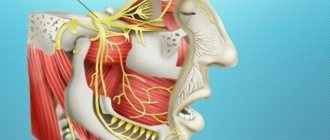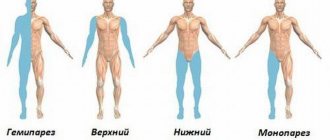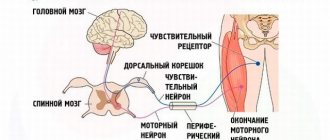Normal penetration of air into the lung cavity is necessary for every person, because thanks to it the body is able to function normally. Oxygen allows you to saturate cells with oxygen and also remove carbon dioxide from them. But sometimes people experience a lack of air at night while sleeping, as a result of which they notice severe suffocation.
Physiological problems in the functioning of the body can cause this phenomenon. If this phenomenon occurs several times a night, you should definitely consult a doctor, since it should not occur in a healthy state. This means that the phenomenon indicates the course of serious problems in the body.
Symptoms of difficulty breathing
The feeling of having difficulty breathing and not having enough air is often not an independent symptom. It may be accompanied by additional phenomena that cannot be kept silent when contacting a specialist:
- Cough, incl. seizures;
- Wave-like headaches;
- Pain in the chest, stomach, lower abdomen;
- Numbness of the limbs;
- Dyspnea.
Depending on the combination with which symptoms of difficulty breathing and lack of air, a preliminary diagnosis is made. In this case, it is important to take into account the time during which you have difficulty breathing and lack of air, the pattern of occurrence of the problem (if any), the nature of your breathing and the frequency of occurrence of the phenomenon.
Don’t forget about external factors that can provoke situations where it’s difficult to breathe.
Treatment and diagnosis
Delaying a visit to the doctor is dangerous, since rapid breathing in adults and children can be a signal of a serious problem. If such a symptom occurs in conjunction with chest pain, changes in skin color, or fainting, you need to seek help as soon as possible. Since tachypnea is a symptom of a very wide range of diseases, it is better to see a general specialist.
To make a diagnosis, X-rays, ultrasound, fibrobronchoscopy, blood tests, and listening are used. Based on general results and symptoms, the diagnosis and treatment tactics are determined. It is impossible to predict what kind of therapy will be, since it depends on the cause of rapid breathing.
Treatment often includes oral medications and rehabilitation procedures (oxygen therapy, physiotherapy, SPA treatments).
Difficulty breathing when playing sports
Sometimes situations arise in which a novice athlete has difficulty breathing and does not have enough air when playing sports. The reason for this in 99% of cases is the discrepancy between the weight category and intensity of training. If you are significantly overweight, you should not choose too intense workouts for yourself: this may not only be ineffective, but also dangerous.
In order to recover from an unpleasant symptom, you should pay significant attention to diet and balance the level of physical activity. When you manage to partially get rid of excess weight, the load can be increased. It is best to develop an individual sports plan with a personal trainer. If getting rid of excess weight didn’t help you either and you still find it hard to breathe and don’t have enough air during every workout, then you should contact a specialist to diagnose your body.
Traditional methods of therapy
You can combat temporary cessation of breathing during sleep using several traditional methods:
- before going to bed, it is necessary to ensure that the nasal passages are freed from mucus and crusts by rinsing;
- in the evening you need to take a glass of white cabbage juice orally with the addition of 1 tsp. honey
If you use these remedies along with medications and surgical methods, you can get rid of this condition much faster.
Not enough air: different cases
It is difficult to breathe and there is not enough air due to the influence of various external factors, which should be paid special attention to. Let's look at some of them:
- During sleep . Many patients are frightened by the syndrome when, during sleep, it is difficult to breathe and there is not enough air. This phenomenon occurs independently and is not accompanied by additional symptoms. More often than not, suspension of ventilation during sleep indicates VSD. In some cases, cessation of ventilation occurs for 10-20 seconds;
- When I yawn . Usually in this case the patient wants to yawn, but he cannot, because there is not enough air to breathe heavily. It is also possible that the patient does not yawn completely. At the same time, I want to yawn very often. In this case, there can be a lot of diagnoses - from overwork to problems with blood vessels. If a symptom bothers you for a week or more, then you should consult a specialist;
- When I eat. Most often, it is difficult to breathe and there is not enough air after a meal for two reasons. Firstly, it can be overeating, and it happens from time to time. Secondly, the cause may be an unhealthy or unbalanced diet. To get rid of the problem, you need to carefully work out your diet, choose the right foods and create a diet. In this case, for the best results, you should consult a nutritionist;
- In the evening . Evening and night are periods of time when VSD worsens. Therefore, if you have difficulty breathing, there is not enough air, and you have a headache, heaviness in your limbs, or numbness in your toes or hands, then you may have VSD. Try to abstract yourself as much as possible from stress and factors that irritate you and contact your treating specialist as soon as possible;
- Since morning. It’s hard to breathe, there is not enough air in the morning, usually due to the feeling of dirty, heavy air. At the same time, it is difficult to both inhale and exhale. If the apartment maintains normal air humidity and the temperature fully meets the requirements of a healthy person (approximately 20 to 24 degrees Celsius), then the reason lies in the patient’s health and may be associated with various disorders. To identify them, a general blood test is usually prescribed, as well as an analysis to detect the level of IgE total;
- Before menstruation. It’s hard to breathe and there’s not enough air, often as part of PMS. Usually it indicates serious excitement or anxiety in the girl, and the worries may or may not be justified. An effective solution to this problem can be the timely use of Glycine: this drug is safe, has a general strengthening effect and protects the nervous system;
- After the bath . This phenomenon is often accompanied by dizziness, nausea, weakness and fatigue. There may be several reasons for this. First: out of habit, high temperatures put strong pressure on the cardiovascular system. The second reason is an unacceptably high temperature for the body. Finally, if these cases are definitely not about you, then most likely the situation due to which you have difficulty breathing and lack of air after a bath lies in health problems.
If there are no circumstances or external factors that accompany difficulty breathing, then most likely the body is trying to notify you of some disease or disorder.
Respiratory neurosis (respiratory): symptoms, treatment, lack of air – Harmony within
Difficulty breathing can occur not only due to diseases of the respiratory system, such as, for example, pneumonia or bronchial asthma.
Failures of the respiratory system occur, as people say in such cases, “due to nervousness.” This simple explanation captures the essence of the disorder.
Its causes are somehow related to the nervous system, be it a neurological disease or a person’s psycho-emotional state.
What is respiratory neurosis?
Respiratory tract neurosis, or respiratory neurosis, or hyperventilation syndrome is a violation of the rhythm and depth of breathing, which is based on neurological or psychological causes. The longer and more often this pathology manifests itself, the more severe it becomes. People of any age are susceptible to the disease - more often women than men.
Causes of the disorder
The cause of respiratory tract neurosis can be the influence of traumatic circumstances: a disaster experienced (or being experienced) by a person, the death of loved ones, a difficult divorce or other conflict. However, some people are more prone to respiratory neurosis than others. This is facilitated by their character traits and personality characteristics. These include:
- suspiciousness, anxiety;
- emotional instability;
- asthenic personality type;
- reduced adaptability (rigidity) when adapting to the external environment;
- tendency to depression.
In fact, we are talking about a risk group for this type of pathology.
Using the example of respiratory neurosis, there is a clear relationship between the emotional and respiratory spheres. Each of them is responsible for different parts of the brain, but they are all components of the central nervous system.
Symptoms of respiratory neurosis
Physically, the breathing process is an alternation of inhalations and exhalations, which are accomplished thanks to the work of the respiratory muscles. Their movements are controlled by the respiratory center located in the medulla oblongata.
Symptoms:
- difficulty inhaling or exhaling (possibly both);
- increased breathing and its shallowness;
- shortness of breath (often called psychogenic shortness of breath);
- spasms;
- darkening of the eyes;
- feeling of a lump in the throat;
- increased heart rate;
- possible pain in the heart area, under the shoulder blade;
- “floaters” in the eyes;
- muscle tremors, nervous tics;
- muscle pain, cramps;
- feeling of lack of air;
- panic, fear of death;
- dizziness;
- there may be loss of consciousness (fainting);
- problems with the digestive system (bloating, diarrhea, constipation, etc.); there may be an atypical manifestation of the disease, in which there are almost no respiratory symptoms, but gastrointestinal distress is observed;
- constant feeling of fatigue.
The danger of the disease is that it occurs in a vicious circle: the stronger the manifestations, the more they cause panic and fear of recurrence in the patient. This stimulates anxiety and other negative emotions, which only contributes to new attacks.
Types of treatment
It is quite possible to get rid of respiratory neurosis. For this, the patient should immediately tune in to complex treatment. If the first attack of lack of air or suffocation can take a person by surprise, then in the future one can and should prepare for such a situation. To avoid panic, you need to set yourself up for a positive outcome in advance.
Doctors advise everyone who has experienced attacks of respiratory tract neurosis to develop for themselves an individual scheme of psychological techniques that will help relieve symptoms. This pattern may include, for example, special hand movements, gaze direction, mentally spoken words, etc.
Respiratory neurosis in children is treated in the same way as in adults, only with the use of weaker medications.
Drug treatment
The list of medications for treatment may differ from patient to patient. It depends on the manifestations of the disease and the characteristics of the body. These can be mild sedatives, as with any neurosis, as well as antidepressants, tranquilizers, and antipsychotics.
Sedatives help normalize sleep, return to normal life, and resist stress. Other medications are prescribed according to symptoms.
You just need to remember the main thing: the choice of prescriptions remains only with the doctor; self-medication is very dangerous!
Homeopathic medicines can be used as additional therapy, although medical opinions about their effectiveness differ. A mandatory element of therapy is vitamin complexes that restore the body's defenses.
To consolidate the effect of drug therapy, physiotherapy is often prescribed: Charcot's douche, electrosleep, ultraviolet irradiation and others. Sanatorium-resort treatment is indicated as a general strengthening method.
Psychotherapy for respiratory neurosis
Psychological help and support is the basis of therapy. After all, the result of treatment depends on the patient’s mood. The specificity of psychotherapy lies in a step-by-step, step-by-step change in the patient’s perception of the situation.
A person must first admit that there is a problem and then rethink their negative experience. The next step is to find the cause of your worries, so that you can then learn to replace negative attitudes with positive ones.
This will help you get rid of anxious expectations, stop being nervous and worried, especially if there is no reason for it.
Treatment at home
The doctor may prescribe exercise therapy and a set of breathing exercises in the hospital. But the patient can do the exercises at home. This requires desire and a little self-discipline. It is also useful to take pine baths and drink herbal teas: with mint, lemon balm, chamomile.
Taking a mild sedative before bed, such as valerian root, is suitable. Full and sufficient sleep and adherence to a daily routine are very important for normalizing immunity, returning to work, and getting rid of anxiety.
Correct breathing for respiratory neurosis
Typically, an attack begins with an involuntary sigh and increased breathing, followed by changes in the concentration of oxygen and carbon dioxide in the blood. When there is a feeling of lack of air, the patient begins to fear, up to a panic attack. At this moment, it is important to sit down, leaning your back against a solid support, and begin to breathe calmly.
Without sudden stops and sighs, you need to breathe calmly for 2-3 minutes, then hold your breath for 10 seconds and breathe again at a calm rhythm for about 3 minutes. This simplest breathing exercise needs to be repeated 5-8 times.
It will help you calm down, normalize your breathing and, which is important for any neurosis, stop a panic attack and take control of your body.
Source:
Respiratory neurosis: causes, symptoms, treatment methods
Neurosis is a special psychological state. It is expressed in the manifestation of certain fairly pronounced symptoms. One of the most common types is respiratory neurosis. The disease is characterized by a vivid clinical picture and requires not only the help of a specialist, but also the use of drugs from various groups.
What is respiratory neurosis
In medicine, respiratory neurosis means a violation of the rhythm of breathing against the background of certain psychological conditions. In some cases, such a condition may occur as an independent disease or be a consequence of other psychological problems.
This type of neurosis is also called “hyperventilation syndrome” and “dysfunctional breathing”.
Useful information According to research, it has been established that most patients with this diagnosis experience a disruption in the usual rhythm of life, and among the main symptoms are suffocation and acute respiratory distress. Such changes cause great concern, and in severe cases, anxiety arises, which worsens the condition.
But many people wonder why breathing problems are related specifically to the performance of the nervous system. This is due to the fact that the breathing process is controlled by a certain part of the brain. That is why a person does not think about the need to breathe. When the psycho-emotional state is disturbed, a complex mechanism fails.
As a result of all the changes, the respiratory center sends an insufficient number of impulses along the fibers of the nervous tissue. Muscle tissue begins to contract more often, and more oxygen enters the lungs.
Causes
There are several reasons for the manifestation of respiratory neurosis. They are all divided into two large categories: neurological and psychological. But often the disease begins to manifest itself under the influence of several factors at once.
Experts note that there are often cases when pathology occurs against the background of psychosomatic disorders. In this case, an acute disruption of the respiratory system is a psychotraumatic situation.
Scientists claim that the body can remember similar conditions and the circumstances in which it arose.
Respiratory neurosis can often occur for the following reasons:
- Neurological and mental pathologies. Shortness of breath occurs with depression.
- Disturbed psycho-emotional state for certain reasons.
- Frequent stress, neuroses.
- Diseases of the respiratory system.
- The influence of toxic and other toxic substances on the body.
- Impaired functioning of the autonomic system.
One of the factors in the occurrence of respiratory neurosis can also be an overdose of drugs of various groups.
Symptoms
Against the background of dysfunction of the central nervous system or due to other reasons, muscle tissue begins to move chaotically as a result of insufficient incoming impulses. This provokes insufficiency or excessive amount of air in the respiratory tract, lungs and the entire body as a whole.
With respiratory neurosis, symptoms may be as follows:
- Dizziness. Quite often leads to fainting or fainting.
- Trembling of limbs. The intensity depends on the severity of the condition.
- The appearance of nervous tics. They also appear to varying degrees.
- Painful sensations in muscle tissue, tension.
- Darkening of the eyes. Floaters and circles before the eyes may also appear.
- Pain in the heart area.
- Feeling of a lump in the throat.
- Shortness of breath. Occurs during physical activity, climbing stairs, lifting weights.
- General difficulty in breathing.
Patients, among other things, experience constant fatigue, which has a chronic form, and decreased performance.
Possible diagnoses
Let's consider what diseases make it difficult to breathe and lack air?
- Pulmonary edema. It’s hard to breathe, there’s not enough air due to oxygen starvation of tissues and organs - hypoxia. This condition is pathological and requires prompt intervention by a specialist;
- Heart defects of congenital and acquired type. They manifest themselves through heart pain and dizziness. At the same time, the patient has difficulty breathing and does not have enough air;
- Blocked airways. The reasons for this can be natural and mechanical - the latter is more typical for a child than for an adult. If this problem occurs, immediate medical attention is required;
- Bronchial asthma. An insidious disease in which both mild shortness of breath and serious suffocation occur; the patient has difficulty breathing and does not have enough air, and for no apparent reason. With improper treatment or its absence, the risk of death increases, therefore, after identifying the symptom, it is recommended to immediately consult a doctor;
- Rheumatisms. Accompanied by aching pain, concentrated in one point, and distracting attention. Having difficulty breathing and not having enough air is only a side effect;
- Hypertension. Moreover, when blood pressure normalizes, breathing is restored;
- Angina pectoris. The pain is concentrated in the central part of the chest, complicates the heartbeat, and the patient has difficulty breathing and does not have enough air. Most often found in people of middle or older age;
- Allergy. Some allergic reactions (especially seasonal ones) cause bouts of sneezing and coughing, which increase the sensation of difficulty breathing.
- Oncology of the lungs or bronchi. Most often it occurs in experienced smokers, as well as people with a hereditary predisposition. Accompanied by a sharp weight loss, hemoptysis, weakness;
- Emphysema. With it, the patient complains that he has difficulty breathing and does not have enough air, even in a calm state. The disease is expressed in the appearance of bubbles in the structure of the bronchi: over time, these bubbles burst, forming cavities. These cavities become the basis for which there is not enough air to breathe;
- The reasons are psychosomatic. Severe stress or upset is especially dangerous for sensitive people and can cause breathing problems;
- Coronary heart disease. If you have difficulty breathing, there is not enough air, you feel pain in the chest, rapid heartbeat, and increased sweating. These symptoms can appear even in a calm state;
- Lesions of the lungs or bronchi of an infectious nature. Accompanied by types of intoxication of the body - headache, fever, weakness and fever.
Above is a list of the most common diagnoses for which it is difficult to breathe and there is not enough air: in reality, there are much more of them.
Only a specialist doctor can make a diagnosis after conducting a thorough diagnosis and studying the tests.
Diagnostics
During the first visit to the doctor, it is necessary to talk about the disturbing symptoms in as much detail as possible. Patients rarely remember moments when they stop breathing during sleep. More information is available to relatives living with him, who monitor the person during rest. Additional examinations may be needed:
- blood and urine tests;
- sputum examination;
- X-rays of light;
- allergy tests;
- heart electrocardiogram;
- consultation of narrow specialists.
All these actions will help identify the cause of the pathology. Next, the necessary treatment will be selected. Only a doctor should prescribe it.
Top 5 causes of bad breath
The inability to breathe air does not occur instantly: often there is not enough air to breathe due to certain diseases, pathologies, disorders and other factors that can be ranked by frequency of prevalence:
- Smoking. If a person has been smoking for many years, then it is likely that he may have problems in which he cannot breathe hard and does not have enough air;
- Overweight and obesity . The main danger of excess weight is various health problems, one of which is having difficulty breathing and not having enough air;
- Viral diseases . Diseases caused by a virus, in the absence of appropriate treatment, drag on for a long period of time. At the same time, gas exchange in the body becomes more difficult, due to which it is difficult to breathe and there is not enough air;
- Heart diseases . If treated inappropriately or if pain is ignored, heart disease has a direct effect on the arterial vessels. Affected arterial vessels provoke chest pain, rapid heartbeat and breathing problems;
- Cough . There can be many reasons for coughing - bronchitis, bronchial asthma, lung problems, etc. A severe cough provokes spasms, as a result of which it is difficult to breathe and there is not enough air.
It is very important not to delay visiting a specialist if an alarming symptom occurs. Remember that the longer the disease develops, the harder it will be to cure it later.
How to prevent sleep paralysis
Prevention of attacks of sleep paralysis is possible if you organize the correct sleep schedule: sleep enough time, go to bed and get up at approximately the same time, monitor a comfortable temperature in the room. You can try changing your position: if you sleep on your back, try falling asleep on your side or stomach - in this case, the chances of experiencing an attack of sleep paralysis are greatly reduced. In addition, it is not recommended to eat heavily before bed, drink alcohol, smoke or drink coffee.
Urgent Care
If the patient feels that he is having difficulty breathing and does not have enough air, then the most important thing is not to panic and provide first aid correctly. It represents:
- Providing access to fresh air. This is especially true if the attack occurs indoors, then you can open a window or, if possible, turn on a fan or air conditioner. Cool air can be created artificially using available means. This method will create a ventilation effect: psychologically the patient will feel that there is enough air, and the fear of suffocation will disappear;
- Increased concentration of carbon dioxide in the air. Here the patient can help himself. To do this, it is necessary for him to breathe intensively into the palm of his hand or into a paper bag, if one is at hand. It is enough to continue the manipulations for 30-40 seconds; This method relieves nervous tension, has a calming effect, and stabilizes overall respiratory function.
- Breathing exercises. It is usually prescribed to a child in case of an attack, but is suitable even for an adult. For this you will need to inhale for 6 counts and exhale for 8. Repeat 3-4 times. Then you need to breathe “like a dog”, sticking out your tongue. This practice will help relieve an attack in which there is not enough air to breathe;
- Calling an ambulance. After you have managed to cope with the first manifestations of the symptom, be sure to call emergency specialists, especially if you do not know why you are having difficulty breathing and lacking air.
We should not forget about individual precautions. They are acceptable if the patient knows for sure why he has difficulty breathing and lacks air. For example, allergies, bronchial asthma, heart disease, etc. As part of individual care, you should take appropriate medication, lie down and try to relax.
What is sleep paralysis
In fact, sleep paralysis is a transitional state between wakefulness and sleep during which natural muscle weakness occurs. During REM sleep, the brain is active and the body is practically paralyzed. The point of such restraint is to prevent a person from harming himself. Usually the ability to move returns before waking up, but in some cases this does not happen, which causes fear. Such episodes can last from a few seconds to several minutes.
Preventing difficulty breathing
The following preventive recommendations will help prevent the development of a symptom in which it is difficult to breathe and there is not enough air:
- Ventilate the room regularly or use air conditioning to maintain optimal temperature. Normal ventilation should be carried out for 10 to 30 minutes in each room;
- Use a humidifier to prevent indoor air from being difficult to breathe. An excellent alternative to this would be to dry wet clothes indoors. Place a clothesline in the room and hang wet clothes once a week: this method will help make the air more pleasant to breathe;
- Be sure to carry out regular wet cleaning. To do this, just walk with a damp cloth over all surfaces in the room. The most important thing is to free large surface areas from heavy dust - after all, it often becomes the basis for the development of severe coughing attacks, allergies and other reasons for which it is difficult to breathe without enough air.
An excellent preventive measure would be regular exercise, preferably in the fresh air. It is not necessary to visit expensive sports clubs: morning exercises or a 30-minute light jog will suffice. The main thing is to do this regularly. You will soon notice positive changes in both the ease of breathing and the health of your entire body.
Manifestations of chronic shortness of breath
Chronic shortness of breath is primarily accompanied by a feeling of dissatisfaction with inhalation, disturbance of rhythm, depth and respiratory rate. But there are also a number of indirect symptoms that significantly worsen the quality of life of patients and also characterize the presence of hypoxia in the body:
- Constant feeling of fatigue.
- Dizziness.
- Increased sweating.
- The appearance of respiratory arrests at night, during sleep.
- Frequent yawning.
- Blue circles under the eyes.
- Thickening of the fingertips in the form of “drumsticks”.
- Changing the shape of nails in the shape of “hour glasses”.
- Headache.
- Pallor.
Many of these symptoms can accompany various diseases, so they need to be assessed comprehensively and take into account the presence of chronic pathologies of the body.











